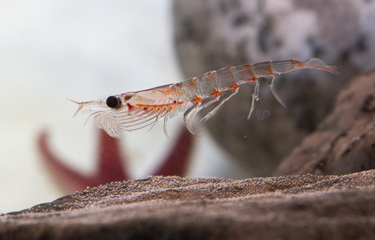New research from Oregon State University recently published in the Marine Ecology Progress Series indicates climate conditions have a significant impact on Antarctic krill reproductive success.
Because krill is such an important component of healthy ecosystems, the impacts of krill abundance be far-reaching, the study found.
The general patterns of climate conditions that are affecting krill species are natural five- to seven-year cycles, which can impact availability of food and health of reproducing females. The study notes that these natural cycles are becoming warmer and more intense due to climate change, putting further pressure on reproductive success.
“This ecologically important species serves as the base of the food web in the Antarctic peninsula, supporting everything from whales to penguins to seabirds,” said Kristin Steinke, the study’s lead author. “Understanding the connection between the environment and population health is critical for predicting future demographic patterns and responses to climate change in the krill population.”
Antarctic krill is not only a food source for important fish species, it is also an important fishery itself for fish feed. The Western Antarctic Peninsula saw a krill harvest of 313,000 metric tons in 2018.
The climate in the Western Antarctic Peninsula has two patterns, with the ability to affect the availability of food for Antarctic krill, and in particular, resources for the mature females – the southern annual mode, or SAM, and the multivariate El Niño southern oscillation index, or MEI.
SAM and MEI are natural climate patterns, but they are changing as the planet warms.
“The SAM was found to be really important to driving the health of the female krill,” said Kim Bernard, another of the paper's authors. “As the SAM continues to trend positive, it will continue to get warmer, and that suggests a negative effect on the overall condition of female krill during their spawning season.”
Warmer conditions tend to have a negative impact on the health of female krill of reproductive age, but the impacts can vary depending on the season when they occur.
“It is really critical to start including climate change impacts as part of the plan,” Bernard said. “Antarctic krill are a super-unique and fascinating species. So many predators feed on them. If you have a collapse of the krill population, you would be putting all of those populations at risk.”
Photo courtesy of Tarpan/Shutterstock







